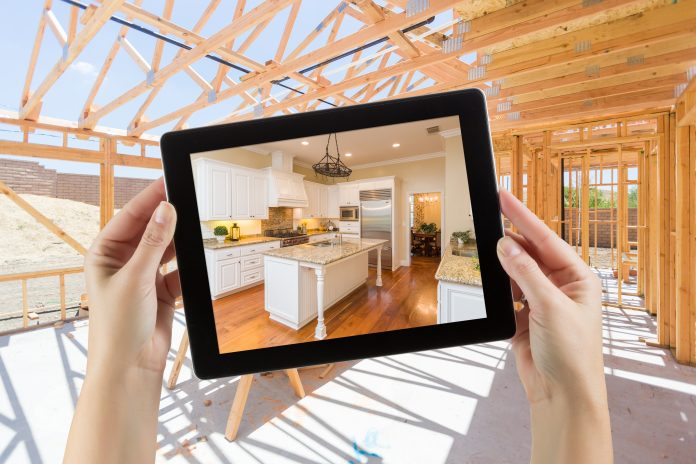By Benjy Katchen
There are a number of visualization tools on the market today that enable residential builders to work with clients in ways they never would have imagined 20 years ago. Whether buying or renovating a home, consumers no longer have to rely on their imagination to envision a home’s potential. Now, they can actually picture what each room will or could look like – from the floorplan, finishes and furniture placement to how natural and artificial light interacts with the space.
Here’s a look at some of the tools that home builders can leverage to communicate and collaborate with clients more effectively, creating a more positive and productive working relationship while reducing time and costs spent on projects.
Conveying your vision
Visualization tools allow builders, architects and designers to communicate ideas more effectively and to work collaboratively. Rather than relying on verbal descriptions or 2D drawings, these professionals can visually convey their ideas, designs, and construction plans, reducing the potential for misunderstandings or errors.
Interactive 3D visualization platforms create renderings and virtual models to explore and envision 3D designs. Builders, as well as architects, can use 3D visualization software to create interactive experiences to show owners and potential buyers what the final design of space will look like once the project has been completed. A client’s dream house can now be completely custom and perfectly tailored to their functional requirements and aesthetic needs before construction even begins.
Reducing design work and minimizing rework
Interactive floor plan software uses 3D and 2D renderings to allow potential buyers to visualize the layout and dimensions of each room, which can help builders and clients to understand the overall structure of the home. 3D rendering can provide a full virtual makeover of a property, which can be helpful for providing clients with a visualization of what a renovation or remodel of their home could look like.
With the assistance of virtual and augmented reality tools, users can drag and drop furniture, fixtures and other objects – such as art – into a space to create a simulated environment on their smartphones or tablets. These tools allow potential buyers to immerse themselves in different designs, project virtual objects and interact with the virtual space to make more informed decisions about everything from flooring to lighting to landscaping.
Creating a more realistic representation of homes before construction begins allows clients to see the full impact of their design decisions, minimizing costly design changes down the road. Furthermore, the time it now takes to develop and modify designs based on a client’s feedback is drastically reduced since 3D visualization and rendering software allow you to explore different options and refine and create numerous versions of the design quickly and in real-time.
Marketing properties more effectively
Thanks to visualization technology, residential builders can now market homes and buildings virtually using 360 walkthroughs and photo rendering tools. Virtual tours allow potential buyers to explore properties online while virtual staging tools enable builders to digitally furnish and decorate empty properties. The more a buyer can visualize themselves living in the space, the more likely they’ll be engaged and interested, and the more informed they’ll be when deciding whether it’s the right home for them.
There’s no arguing against the immense benefits that visualization technology brings to the homebuilding and renovation process for both builders and their clients. While many construction companies plan to spend more on digital technology in the coming years, according to a recent 2023 KPMG survey, 73 per cent of those respondents believe the sector lags other countries in digital technology adoption.
The ability to create rich and immersive online experiences for potential buyers or renovators before a project starts is what will ultimately distinguish a great builder from a good one. Leveraging these tools will not only help streamline the decision-making process for clients, it will also save them (and you) time and money – and that’s the perfect recipe for a happy customer.

Benjy Katchen is the CEO of Wahi, a digital real estate platform that provides access to market data and agent-level insights. wahi.com.











